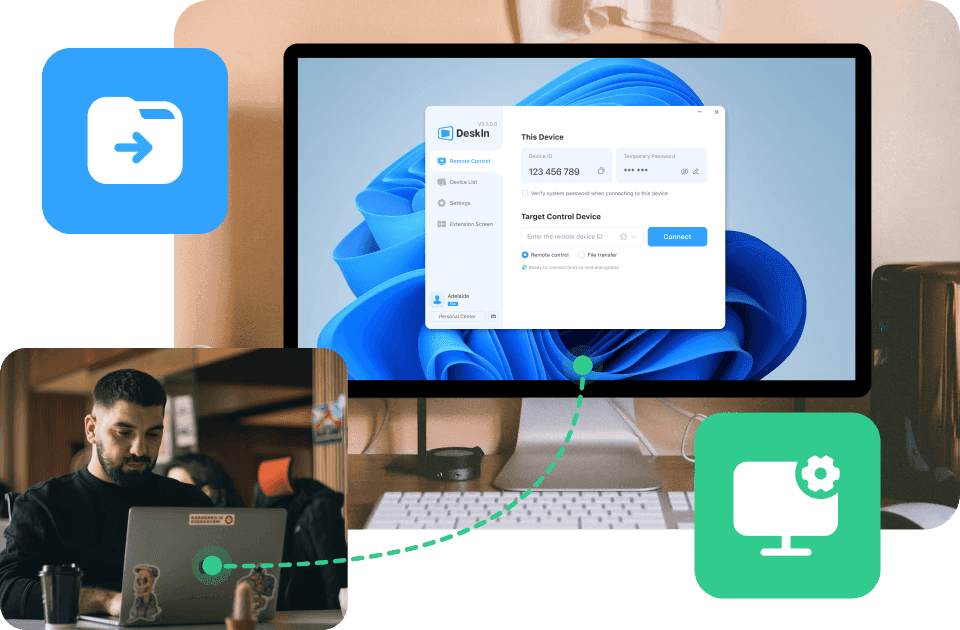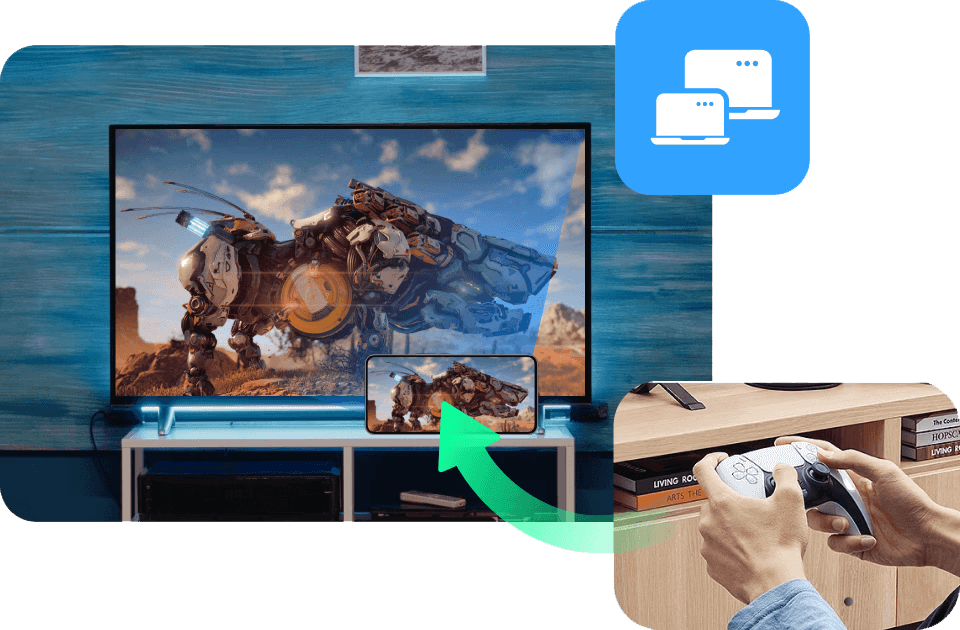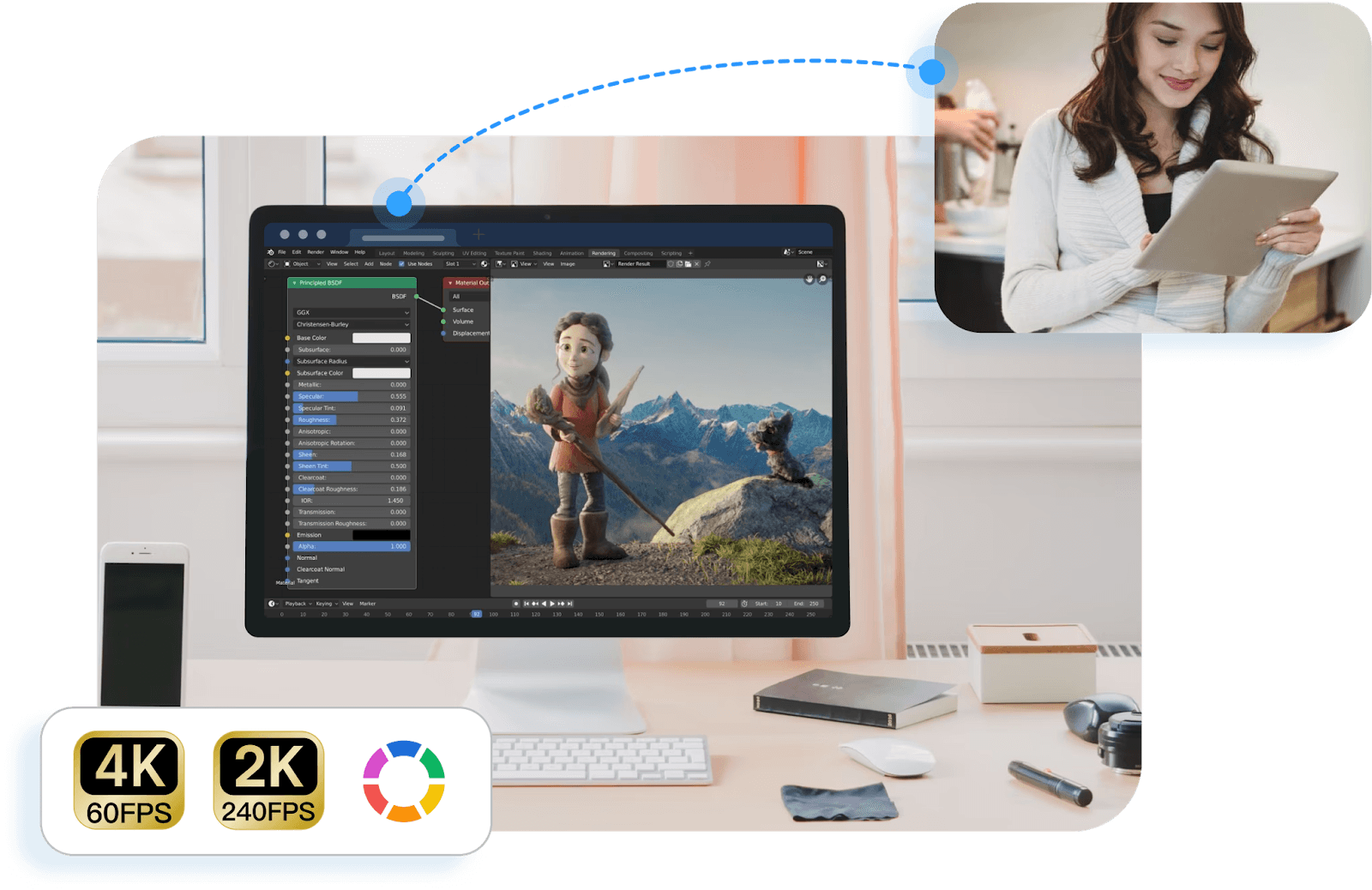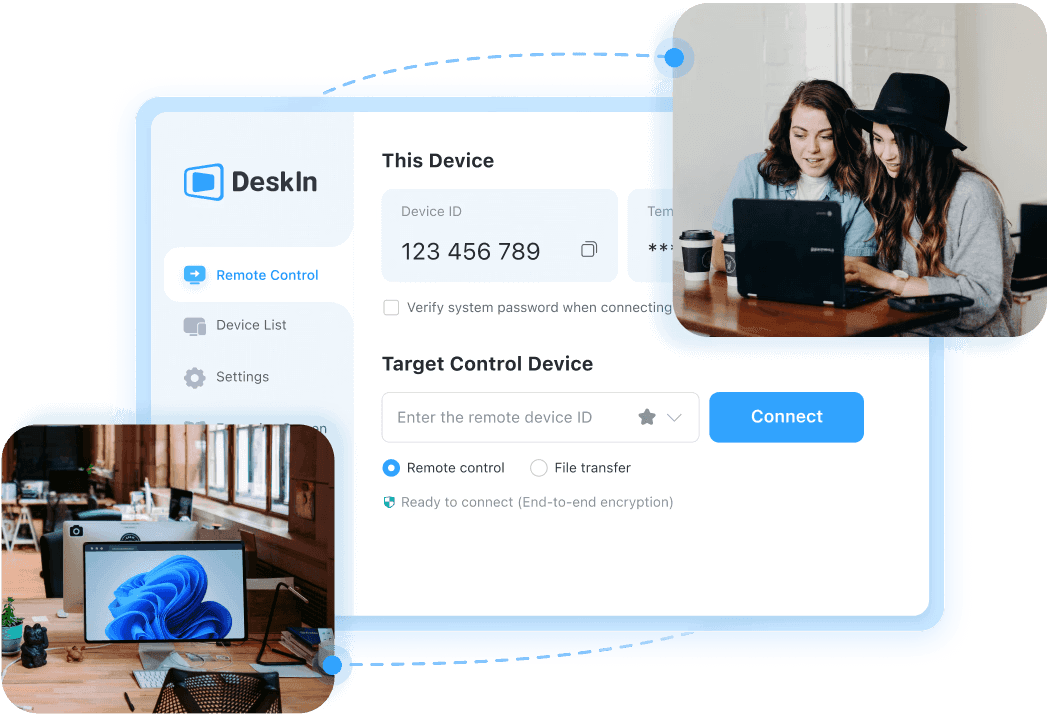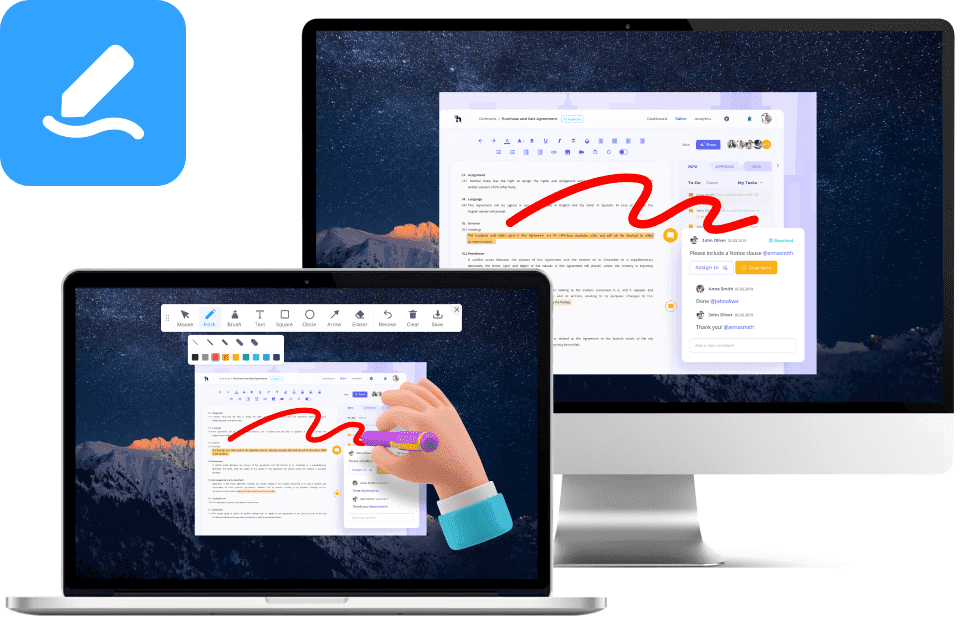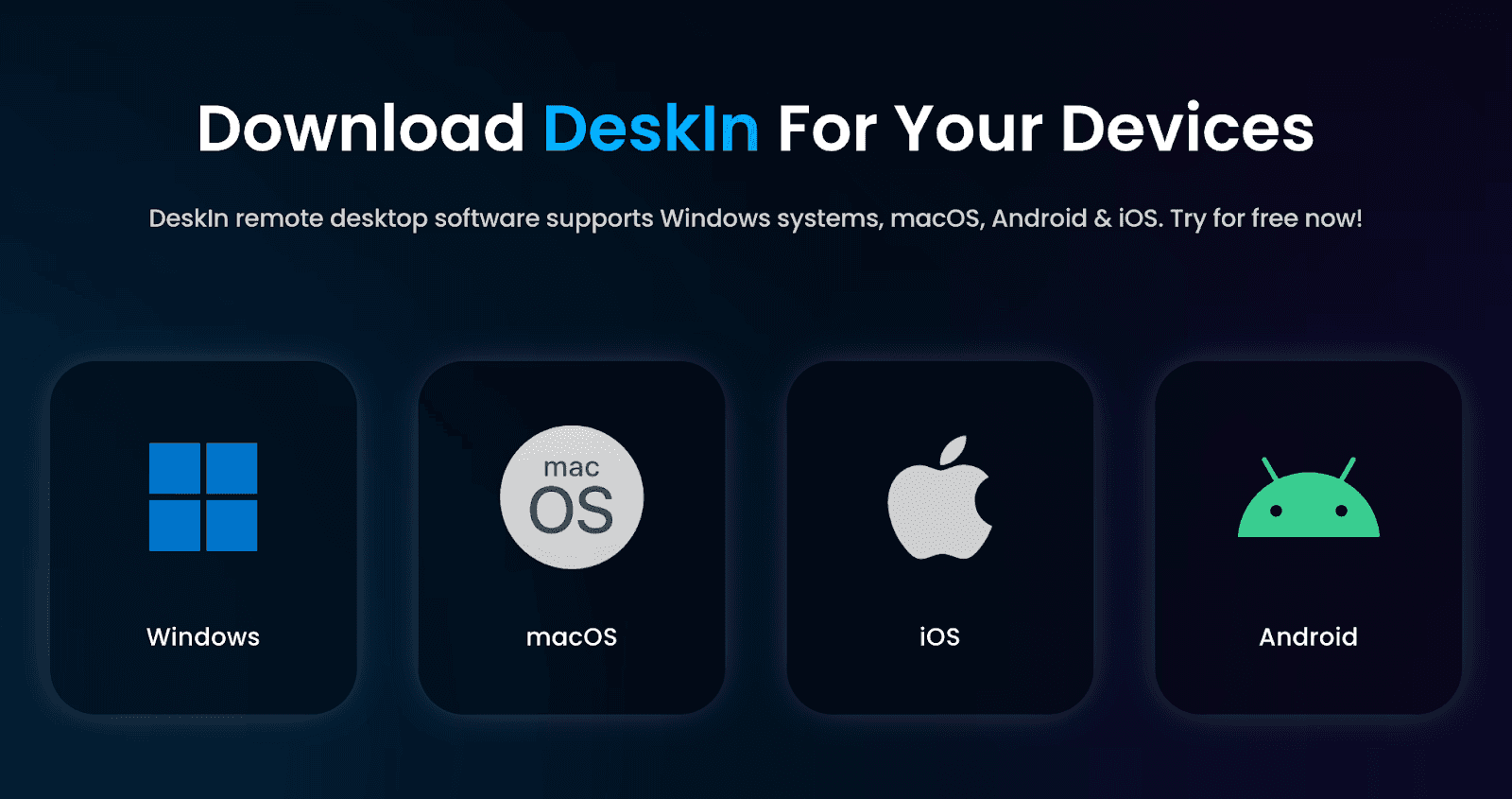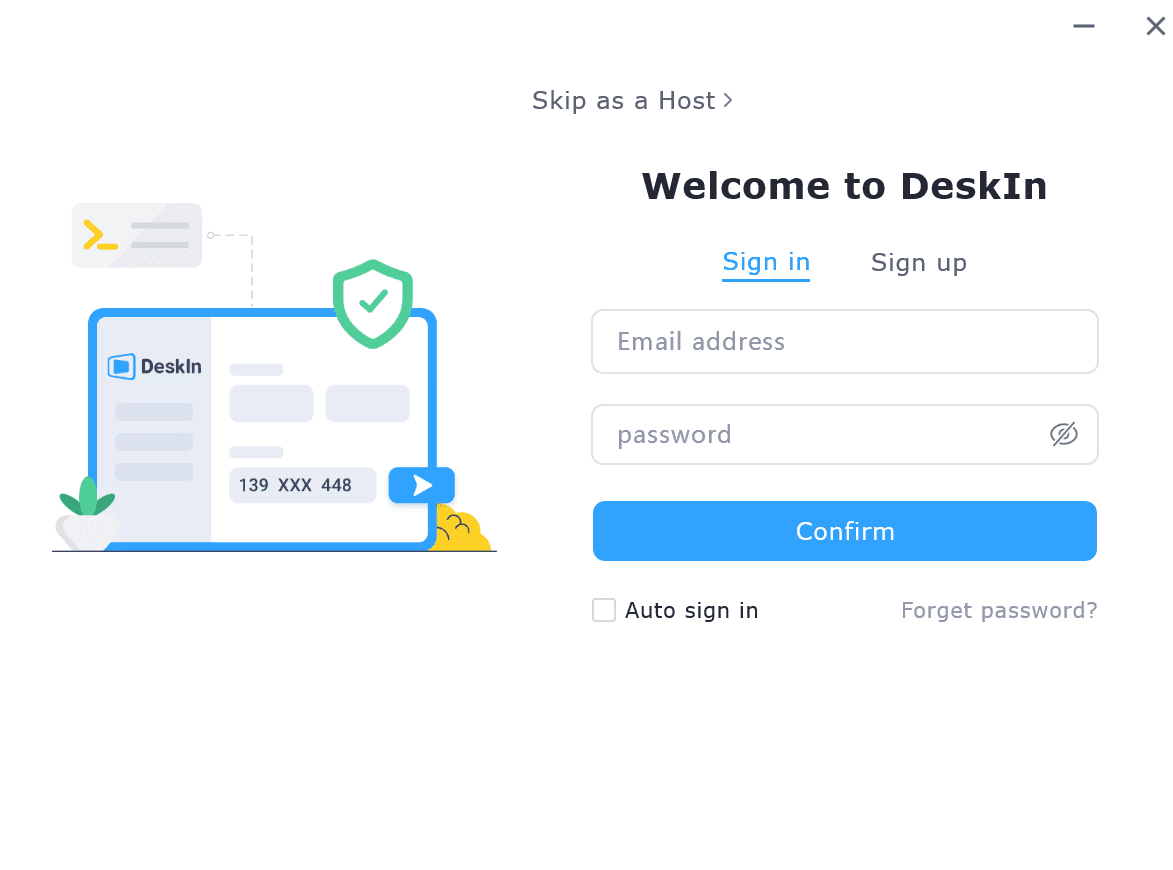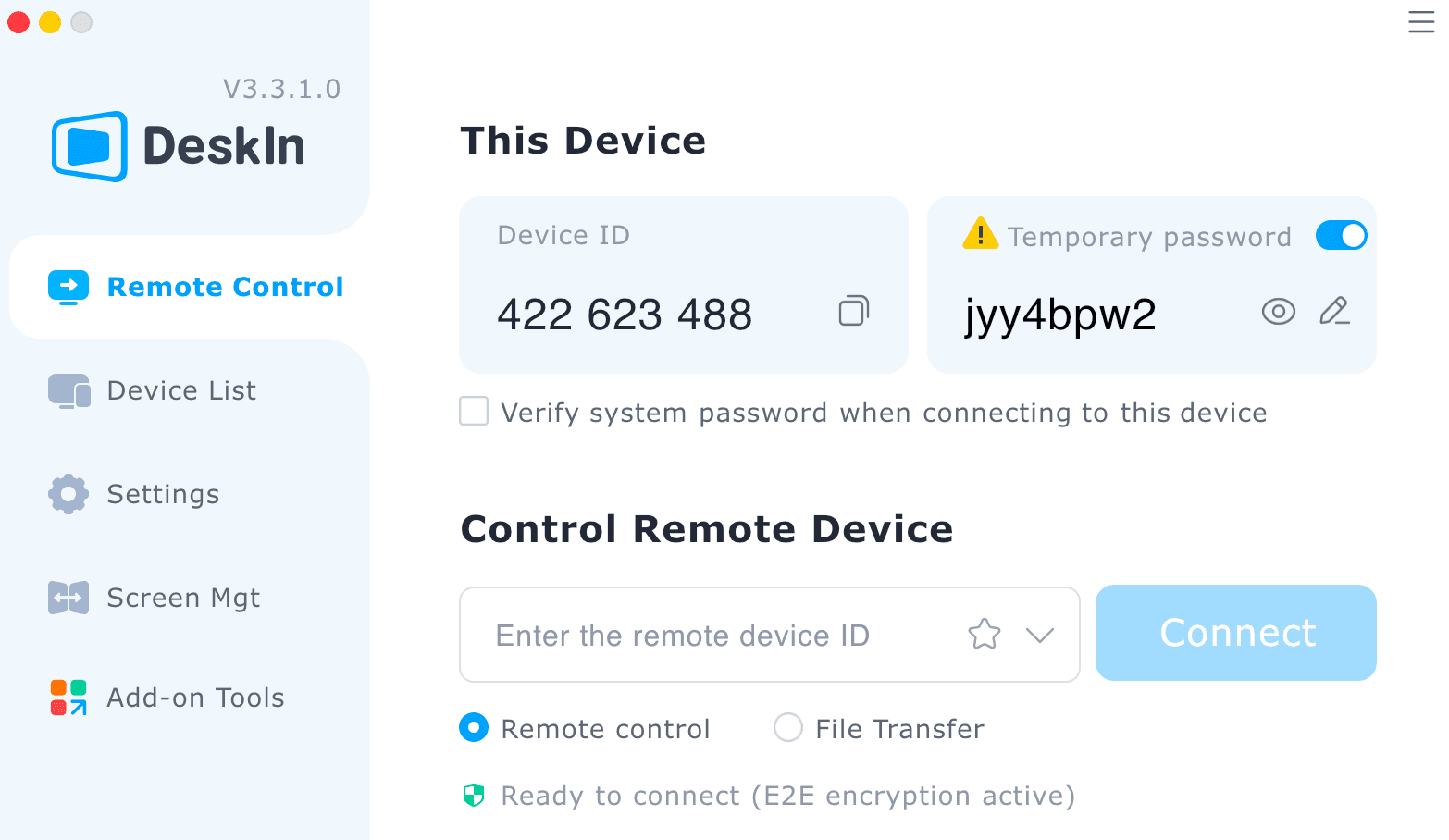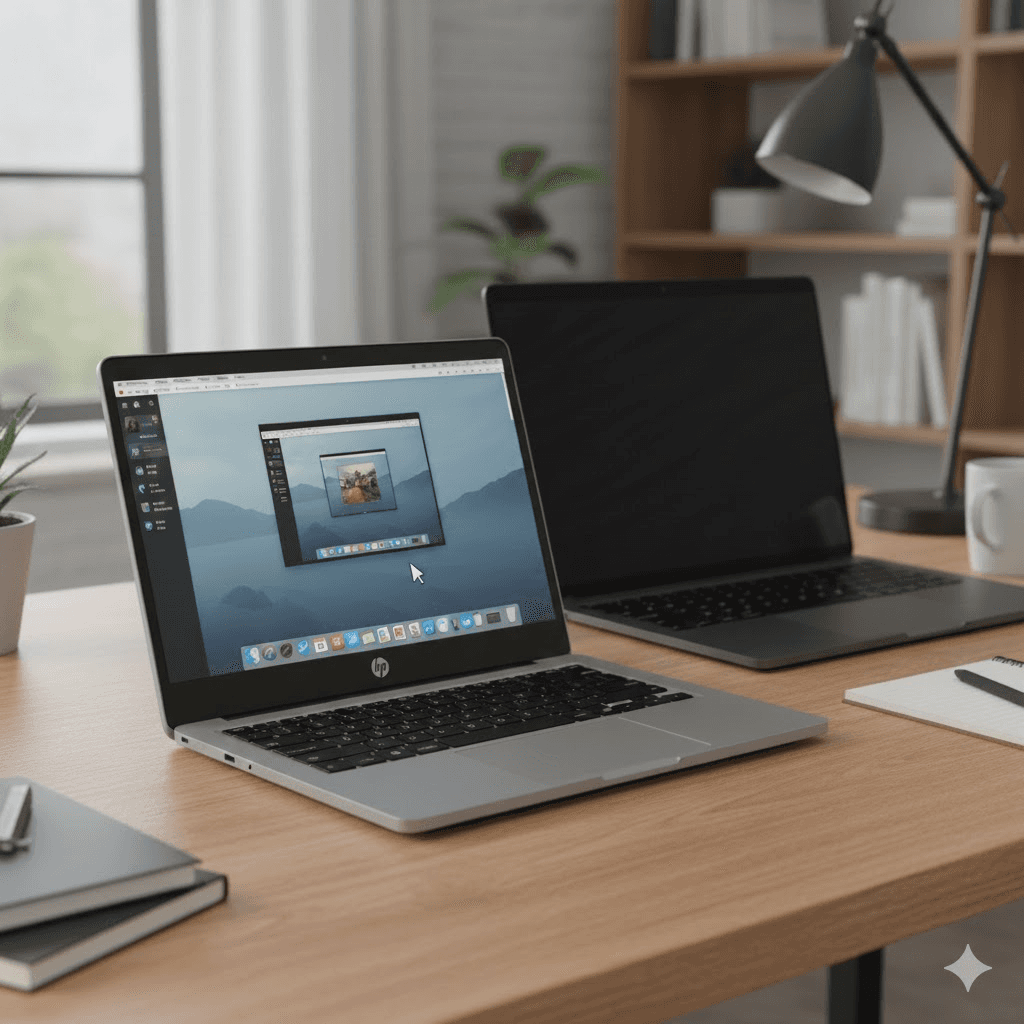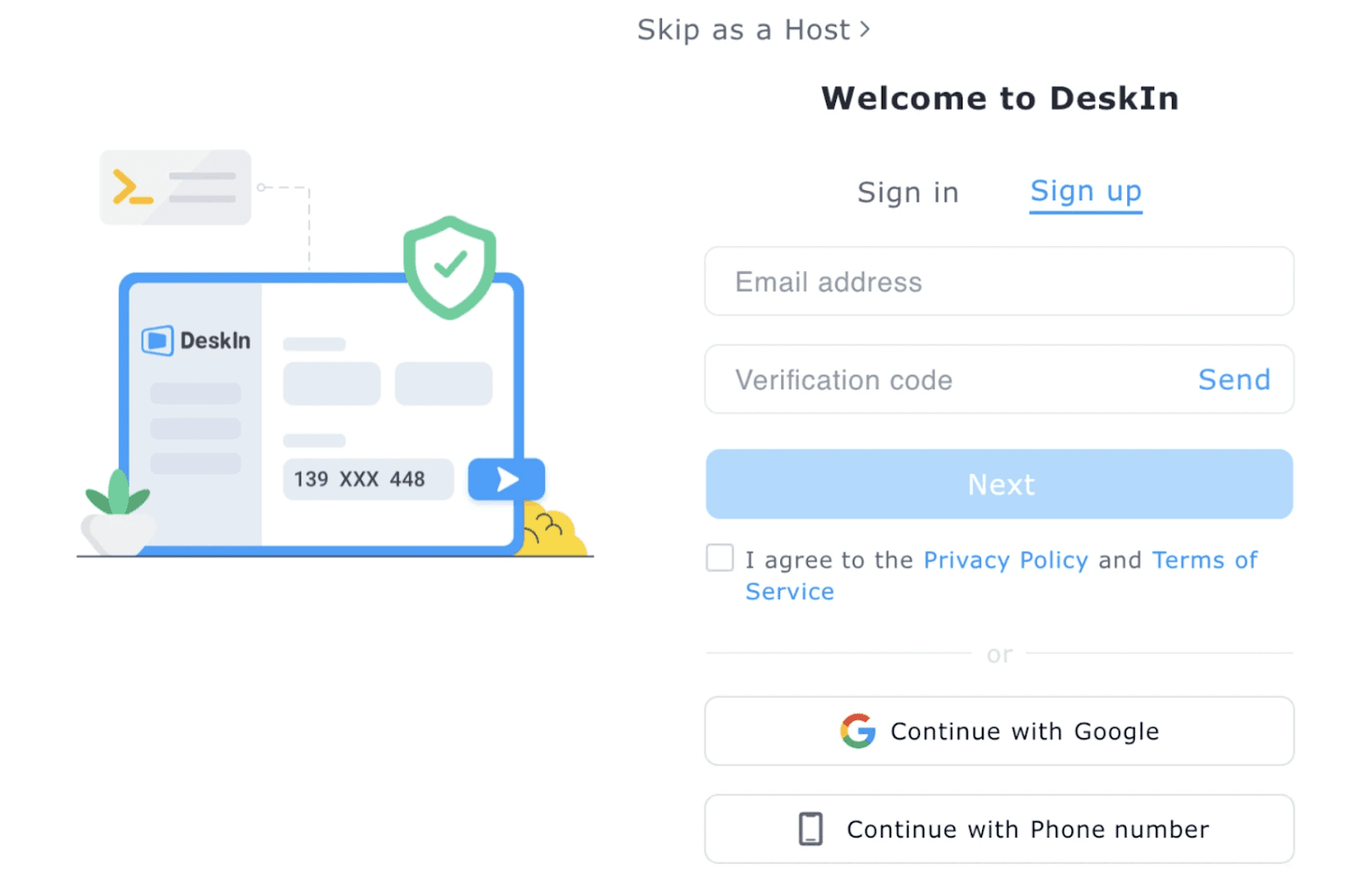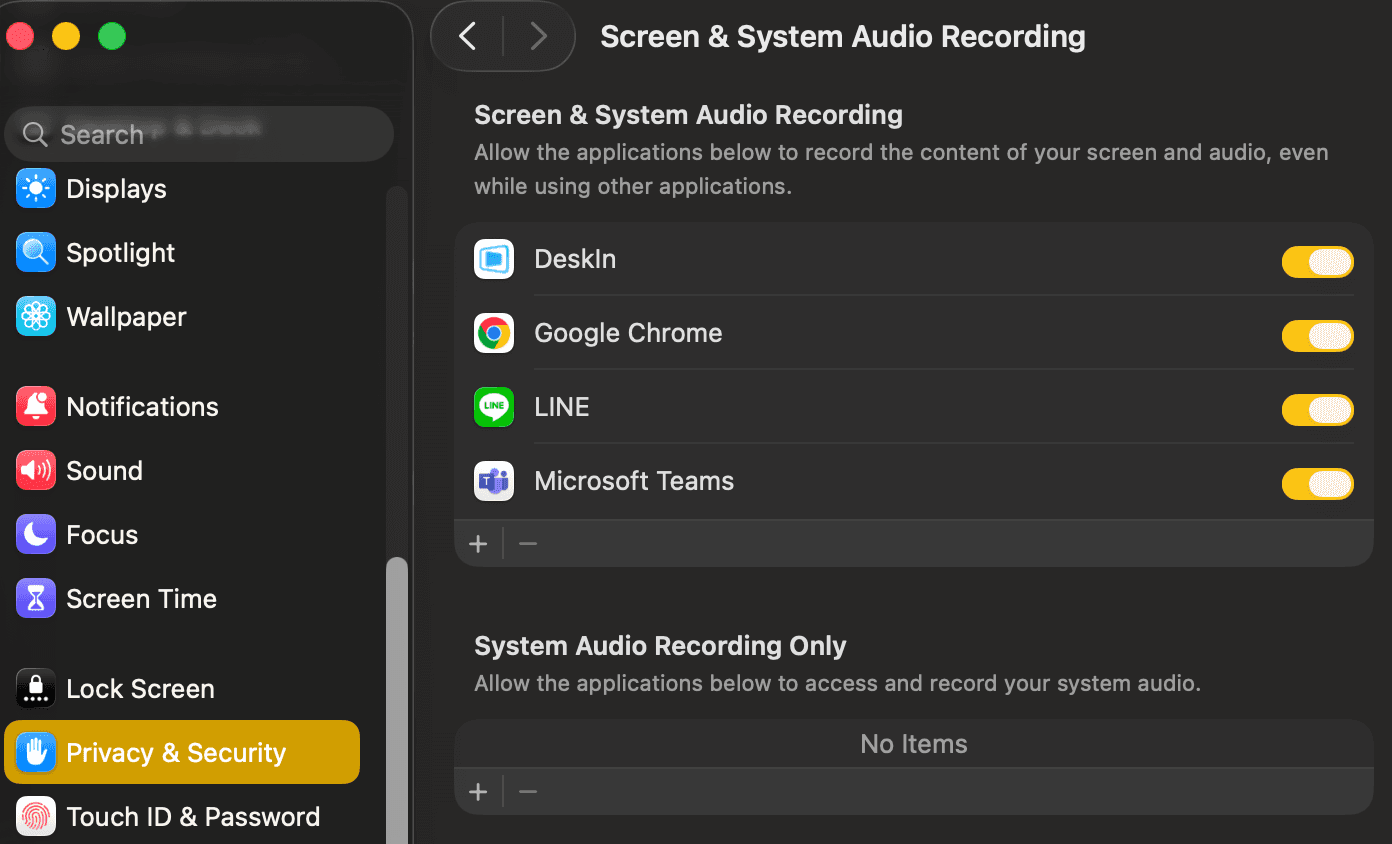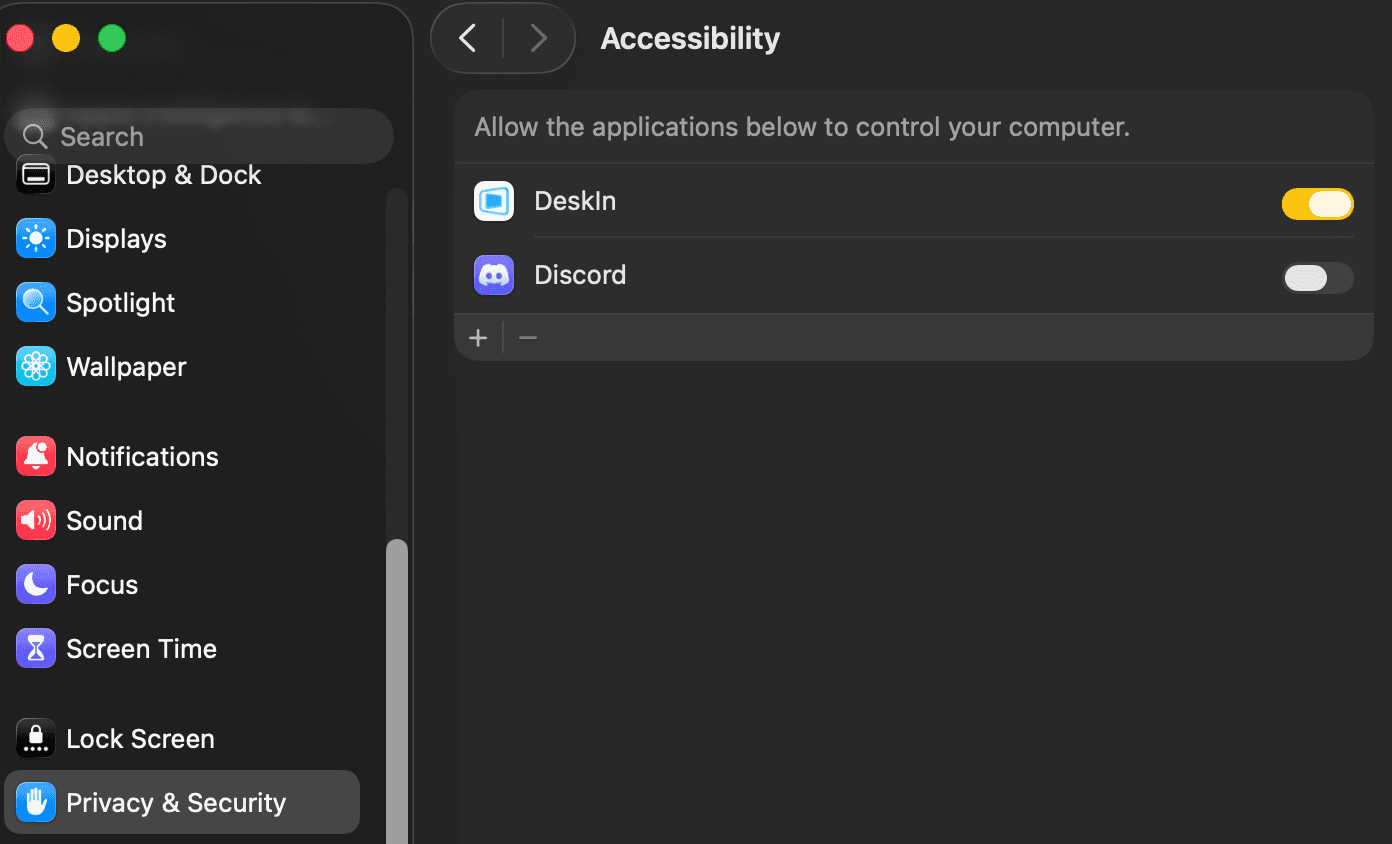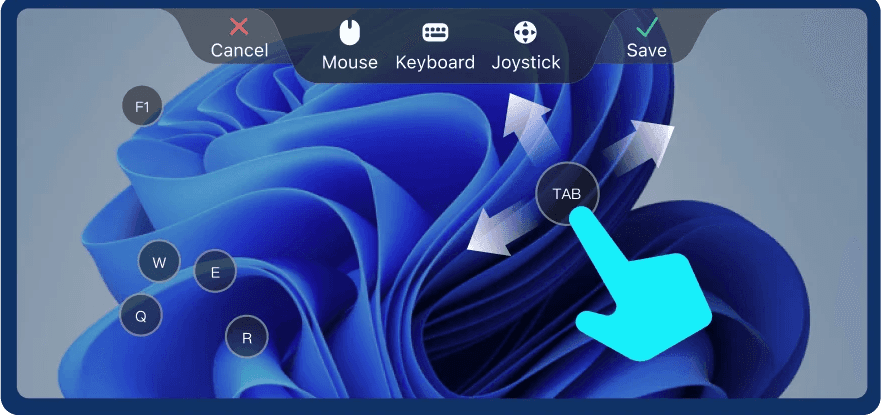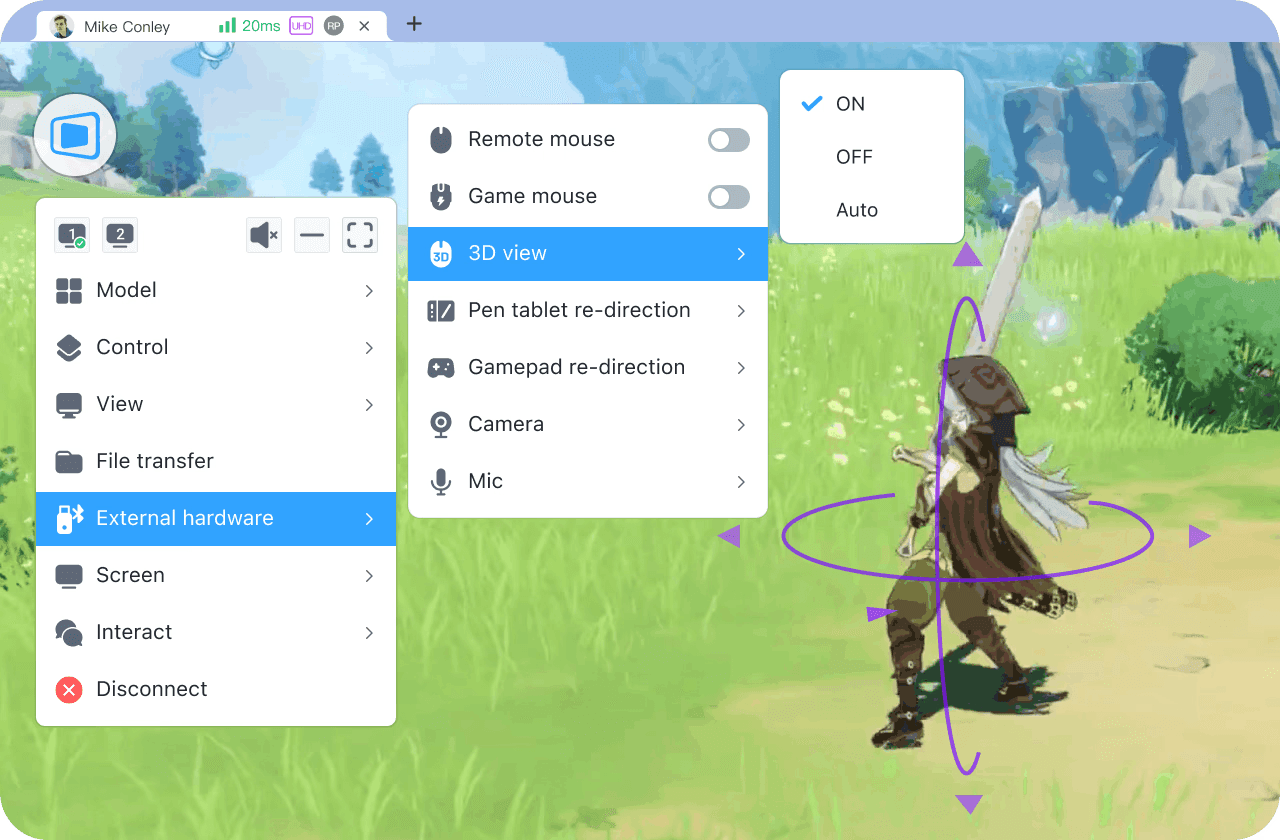Can you play GTA V on mobile? It's a question that haunts every mobile gamer who's ever wanted to cruise through Los Santos on their phone.
If you're tired of waiting for Rockstar to officially bring GTA V to mobile, or you've tried sketchy workarounds that left your device vulnerable, here's some good news: there's a legit way to play GTA V on your phone or tablet. And it's smoother than Franklin's driving skills.
Let me show you why playing GTA V on mobile seemed impossible — and how a smart remote gaming solution called Deskin turns your mobile device into a portable Los Santos gateway.

The Reality Check: Why GTA V Mobile Doesn't Exist (Yet)
Here's the truth bomb: Rockstar Games has never released an official GTA V mobile port. Despite the massive success of GTA San Andreas and Vice City on mobile platforms, GTA V remains locked to PC, PlayStation, and Xbox.
Why? The game is massive. We're talking about a 100+ GB install with graphics that push even high-end PCs to their limits. Mobile hardware, while impressive, isn't quite ready for that level of chaos.
The numbers tell the story:
GTA V requires 8GB RAM minimum on PC
Most mobile devices have 4-8GB RAM total
The game's graphics engine demands dedicated GPU power that mobile chips can't match
But here's where it gets interesting. While you can't install GTA V directly on mobile, you can absolutely play it on your phone or tablet using remote gaming technology.
Method 1: Cloud Gaming Services - Rent Gaming Power
Cloud gaming flips the script entirely. Instead of using your own PC, you rent gaming power from services like GeForce NOW, Xbox Cloud Gaming, or PlayStation Now.
The appeal: No gaming PC required. Just sign up, log in through your browser or app, and start playing GTA V on virtually any device with internet.
The reality:
Latency issues: Even with great internet, there's noticeable input delay
Cost factor: Most services charge $10-20 monthly after free trials
Queue times: Popular games often have wait times during peak hours
Data usage: Streaming HD games can burn through mobile data fast
Performance stats from real users:
Average latency: 80-150ms (compared to 20-40ms for local remote gaming)
Monthly data usage: 10-15GB for casual play
Quality drops during peak hours (6-10 PM)
This works for casual gaming sessions, but competitive players will feel every millisecond of delay.
Method 2: Remote Gaming - Stream GTA V from Your PC
This is the golden ticket for mobile GTA V gaming. Instead of trying to cram the entire game onto your phone, you run it on a gaming PC and stream the experience to your mobile device.
How it works: Your gaming PC does all the heavy lifting — rendering graphics, processing physics, handling AI. Your mobile device becomes a smart controller and display, receiving the video stream and sending your inputs back.
What you need:
A gaming PC with GTA V installed
Stable Wi-Fi connection (5GHz recommended)
A remote gaming app like Deskin or Parsec
Performance reality check: With the right setup, you'll get near-native performance. I'm talking about 60fps gameplay with minimal input lag. The key is having solid internet and the right streaming tool.
The biggest advantage? You're playing the full, unmodified version of GTA V. All DLCs, all updates, all the chaos you expect from Los Santos.
Why Deskin beats the competition:
Ultra-low latency streaming: We're talking sub-40ms input lag, which is close to playing locally. That means responsive driving, accurate shooting, and smooth mission gameplay.
4K60FPS or 2K144FPS support: Your mobile device becomes a premium gaming display. Whether you're using an iPhone, iPad, or Android tablet, you get crisp, smooth visuals that do justice to GTA V's graphics.
True controller support: Connect your favorite Bluetooth controller to your mobile device and play GTA V exactly like you would on console. No awkward touch controls, no compromised gameplay.
Works anywhere: As long as you have internet, you can access your gaming PC. Beach vacation? Business trip? Lunch break? Los Santos is always a tap away.
Cross-platform magic: iPhone to Windows PC, Android to Mac, tablet to gaming rig — Deskin connects everything seamlessly.
Want to level up your entire remote gaming setup? Check out how to optimize your gaming keyboard and hotkeys for remote play to get console-level control on mobile.
Getting Started: Your Step-by-Step Setup Guide
Ready to install GTA V on mobile (sort of)? Here's how to set up remote access gaming:
What you'll need:
Gaming PC with GTA V installed
Mobile device (iOS 12+ or Android 8+)
Stable Wi-Fi connection on both devices
Deskin app (free download)
Setup process:

Download Deskin on both your PC and mobile device

Sign up or log in using the same account on both devices.
On your phone, open DeskIn, go to “My Devices”, and select your PC.
Enter the password to verify or approve the request manually on your PC.
Tap “Control” to initiate the remote connection.
Adjust resolution and frame rate in the settings for optimal performance.
Launch GTA V on your phone and start playing directly on your PC screen.
Connect a game controller to your mobile device for smoother and more responsive gameplay.
Pro tip: Start with 1080p60fps settings and adjust up or down based on your connection stability. You can always fine-tune later.
The whole setup takes about 10 minutes, and once it's done, launching GTA V on mobile becomes as simple as opening an app.

Performance Tips: Getting the Best Mobile GTA V Experience
Getting smooth gameplay requires the right settings. Here's what actually works:
Network optimization:
Use 5GHz Wi-Fi when possible
Keep both devices close to your router
Close bandwidth-heavy apps on your network
Consider ethernet connection for your gaming PC
Quality settings that matter:
Start with 1080p60fps for stable performance
Bump to 2K if your connection can handle it
Prioritize frame rate over resolution for competitive play
Enable hardware acceleration on both devices
Controller setup: Most Bluetooth controllers work great with Deskin. Xbox and PlayStation controllers are plug-and-play. The key is pairing the controller to your mobile device, not your PC.
Real user stats:
Average setup time: 8-12 minutes
Typical latency on good Wi-Fi: 25-35ms
Data usage per hour: 1-2GB on high settings
Battery life impact: 20-30% more drain than normal mobile gaming
Looking to maximize your setup even further? Learn how to set up dual monitors for gaming to keep Discord, maps, or streaming tools open while you play.

Is This Legal and Safe?
The big question everyone asks: is this allowed?
Short answer: Yes, completely.
You're not pirating, emulating, or modifying anything. You own GTA V on PC, you're running it on your own hardware, and you're simply viewing it on a different screen. It's like using a wireless monitor — totally legitimate.
Why it's safe:
No game file modifications
No bypass of copy protection
No violation of Rockstar's terms of service
Uses standard remote access protocols
Privacy protection: Deskin uses encrypted connections between your devices. Your gaming sessions stay private, and no data passes through third-party servers during gameplay.
Get started with Deskin today and turn any screen into your personal gateway to Los Santos. Your mobile GTA V adventure starts now.

Can you play GTA V on mobile? It's a question that haunts every mobile gamer who's ever wanted to cruise through Los Santos on their phone.
If you're tired of waiting for Rockstar to officially bring GTA V to mobile, or you've tried sketchy workarounds that left your device vulnerable, here's some good news: there's a legit way to play GTA V on your phone or tablet. And it's smoother than Franklin's driving skills.
Let me show you why playing GTA V on mobile seemed impossible — and how a smart remote gaming solution called Deskin turns your mobile device into a portable Los Santos gateway.

The Reality Check: Why GTA V Mobile Doesn't Exist (Yet)
Here's the truth bomb: Rockstar Games has never released an official GTA V mobile port. Despite the massive success of GTA San Andreas and Vice City on mobile platforms, GTA V remains locked to PC, PlayStation, and Xbox.
Why? The game is massive. We're talking about a 100+ GB install with graphics that push even high-end PCs to their limits. Mobile hardware, while impressive, isn't quite ready for that level of chaos.
The numbers tell the story:
GTA V requires 8GB RAM minimum on PC
Most mobile devices have 4-8GB RAM total
The game's graphics engine demands dedicated GPU power that mobile chips can't match
But here's where it gets interesting. While you can't install GTA V directly on mobile, you can absolutely play it on your phone or tablet using remote gaming technology.
Method 1: Cloud Gaming Services - Rent Gaming Power
Cloud gaming flips the script entirely. Instead of using your own PC, you rent gaming power from services like GeForce NOW, Xbox Cloud Gaming, or PlayStation Now.
The appeal: No gaming PC required. Just sign up, log in through your browser or app, and start playing GTA V on virtually any device with internet.
The reality:
Latency issues: Even with great internet, there's noticeable input delay
Cost factor: Most services charge $10-20 monthly after free trials
Queue times: Popular games often have wait times during peak hours
Data usage: Streaming HD games can burn through mobile data fast
Performance stats from real users:
Average latency: 80-150ms (compared to 20-40ms for local remote gaming)
Monthly data usage: 10-15GB for casual play
Quality drops during peak hours (6-10 PM)
This works for casual gaming sessions, but competitive players will feel every millisecond of delay.
Method 2: Remote Gaming - Stream GTA V from Your PC
This is the golden ticket for mobile GTA V gaming. Instead of trying to cram the entire game onto your phone, you run it on a gaming PC and stream the experience to your mobile device.
How it works: Your gaming PC does all the heavy lifting — rendering graphics, processing physics, handling AI. Your mobile device becomes a smart controller and display, receiving the video stream and sending your inputs back.
What you need:
A gaming PC with GTA V installed
Stable Wi-Fi connection (5GHz recommended)
A remote gaming app like Deskin or Parsec
Performance reality check: With the right setup, you'll get near-native performance. I'm talking about 60fps gameplay with minimal input lag. The key is having solid internet and the right streaming tool.
The biggest advantage? You're playing the full, unmodified version of GTA V. All DLCs, all updates, all the chaos you expect from Los Santos.
Why Deskin beats the competition:
Ultra-low latency streaming: We're talking sub-40ms input lag, which is close to playing locally. That means responsive driving, accurate shooting, and smooth mission gameplay.
4K60FPS or 2K144FPS support: Your mobile device becomes a premium gaming display. Whether you're using an iPhone, iPad, or Android tablet, you get crisp, smooth visuals that do justice to GTA V's graphics.
True controller support: Connect your favorite Bluetooth controller to your mobile device and play GTA V exactly like you would on console. No awkward touch controls, no compromised gameplay.
Works anywhere: As long as you have internet, you can access your gaming PC. Beach vacation? Business trip? Lunch break? Los Santos is always a tap away.
Cross-platform magic: iPhone to Windows PC, Android to Mac, tablet to gaming rig — Deskin connects everything seamlessly.
Want to level up your entire remote gaming setup? Check out how to optimize your gaming keyboard and hotkeys for remote play to get console-level control on mobile.
Getting Started: Your Step-by-Step Setup Guide
Ready to install GTA V on mobile (sort of)? Here's how to set up remote access gaming:
What you'll need:
Gaming PC with GTA V installed
Mobile device (iOS 12+ or Android 8+)
Stable Wi-Fi connection on both devices
Deskin app (free download)
Setup process:

Download Deskin on both your PC and mobile device

Sign up or log in using the same account on both devices.
On your phone, open DeskIn, go to “My Devices”, and select your PC.
Enter the password to verify or approve the request manually on your PC.
Tap “Control” to initiate the remote connection.
Adjust resolution and frame rate in the settings for optimal performance.
Launch GTA V on your phone and start playing directly on your PC screen.
Connect a game controller to your mobile device for smoother and more responsive gameplay.
Pro tip: Start with 1080p60fps settings and adjust up or down based on your connection stability. You can always fine-tune later.
The whole setup takes about 10 minutes, and once it's done, launching GTA V on mobile becomes as simple as opening an app.

Performance Tips: Getting the Best Mobile GTA V Experience
Getting smooth gameplay requires the right settings. Here's what actually works:
Network optimization:
Use 5GHz Wi-Fi when possible
Keep both devices close to your router
Close bandwidth-heavy apps on your network
Consider ethernet connection for your gaming PC
Quality settings that matter:
Start with 1080p60fps for stable performance
Bump to 2K if your connection can handle it
Prioritize frame rate over resolution for competitive play
Enable hardware acceleration on both devices
Controller setup: Most Bluetooth controllers work great with Deskin. Xbox and PlayStation controllers are plug-and-play. The key is pairing the controller to your mobile device, not your PC.
Real user stats:
Average setup time: 8-12 minutes
Typical latency on good Wi-Fi: 25-35ms
Data usage per hour: 1-2GB on high settings
Battery life impact: 20-30% more drain than normal mobile gaming
Looking to maximize your setup even further? Learn how to set up dual monitors for gaming to keep Discord, maps, or streaming tools open while you play.

Is This Legal and Safe?
The big question everyone asks: is this allowed?
Short answer: Yes, completely.
You're not pirating, emulating, or modifying anything. You own GTA V on PC, you're running it on your own hardware, and you're simply viewing it on a different screen. It's like using a wireless monitor — totally legitimate.
Why it's safe:
No game file modifications
No bypass of copy protection
No violation of Rockstar's terms of service
Uses standard remote access protocols
Privacy protection: Deskin uses encrypted connections between your devices. Your gaming sessions stay private, and no data passes through third-party servers during gameplay.
Get started with Deskin today and turn any screen into your personal gateway to Los Santos. Your mobile GTA V adventure starts now.







